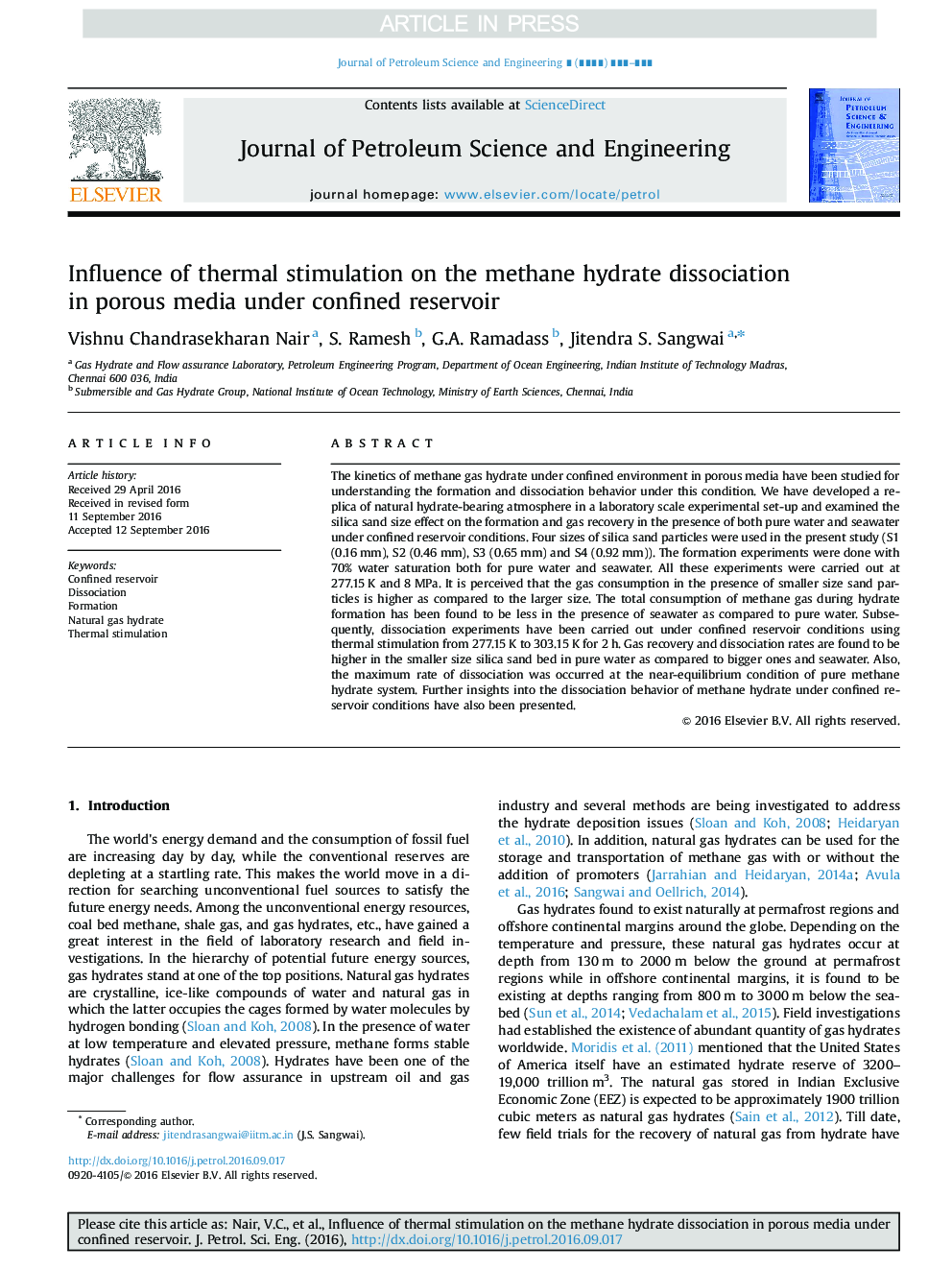| Article ID | Journal | Published Year | Pages | File Type |
|---|---|---|---|---|
| 8125783 | Journal of Petroleum Science and Engineering | 2016 | 13 Pages |
Abstract
The kinetics of methane gas hydrate under confined environment in porous media have been studied for understanding the formation and dissociation behavior under this condition. We have developed a replica of natural hydrate-bearing atmosphere in a laboratory scale experimental set-up and examined the silica sand size effect on the formation and gas recovery in the presence of both pure water and seawater under confined reservoir conditions. Four sizes of silica sand particles were used in the present study (S1 (0.16Â mm), S2 (0.46Â mm), S3 (0.65Â mm) and S4 (0.92Â mm)). The formation experiments were done with 70% water saturation both for pure water and seawater. All these experiments were carried out at 277.15Â K and 8Â MPa. It is perceived that the gas consumption in the presence of smaller size sand particles is higher as compared to the larger size. The total consumption of methane gas during hydrate formation has been found to be less in the presence of seawater as compared to pure water. Subsequently, dissociation experiments have been carried out under confined reservoir conditions using thermal stimulation from 277.15Â K to 303.15Â K for 2Â h. Gas recovery and dissociation rates are found to be higher in the smaller size silica sand bed in pure water as compared to bigger ones and seawater. Also, the maximum rate of dissociation was occurred at the near-equilibrium condition of pure methane hydrate system. Further insights into the dissociation behavior of methane hydrate under confined reservoir conditions have also been presented.
Related Topics
Physical Sciences and Engineering
Earth and Planetary Sciences
Economic Geology
Authors
Vishnu Chandrasekharan Nair, S. Ramesh, G.A. Ramadass, Jitendra S. Sangwai,
